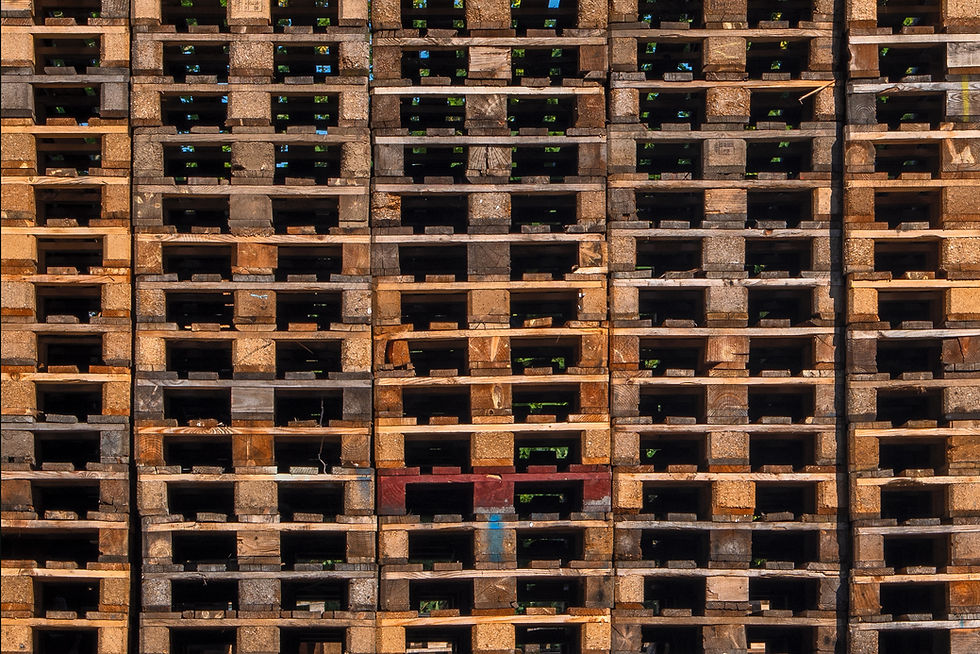Cardboard Pallets - Why are the not ubiquitous
- JPT Team
- Mar 17, 2023
- 2 min read
Cardboard pallets have been gaining popularity in recent years as an alternative to traditional wooden pallets. They are made from a combination of recycled paper and cardboard materials, making them more environmentally friendly than their wooden counterparts. However, despite their benefits, cardboard pallets also have some drawbacks that make them less suitable for certain applications. In this article, we will explore the pros and cons of cardboard pallets and explain why wood still wins in the end.

Pros of Cardboard Pallets
Eco-friendly: Cardboard pallets are made from recycled materials, which makes them a sustainable and environmentally friendly option. They are also biodegradable and can be easily recycled at the end of their life cycle.
Lightweight: Cardboard pallets are significantly lighter than wooden pallets, making them easier to handle and transport. This can result in lower transportation costs and improved safety for workers.
Cost-effective: Cardboard pallets are generally less expensive than wooden pallets, especially when purchased in bulk. They are also cheaper to dispose of, as they can be recycled instead of requiring expensive disposal methods.
Customizable: Cardboard pallets can be customized to fit specific requirements, such as size and weight capacity. They can also be printed with logos or other branding messages, which makes them a great marketing tool.
Cons of Cardboard Pallets
Limited load capacity: Cardboard pallets have a lower load capacity compared to wooden pallets. This makes them less suitable for heavy or bulky items.
Moisture sensitivity: Cardboard pallets are highly sensitive to moisture and can become weakened or damaged when exposed to damp conditions. This limits their use in certain environments, such as in areas with high humidity or where water exposure is likely.
Durability: Cardboard pallets have a shorter lifespan compared to wooden pallets. They can become easily damaged or deformed when subjected to heavy use, which means they may need to be replaced more frequently.
Fire hazard: Cardboard pallets are highly flammable and can pose a fire hazard in certain environments. This limits their use in areas where fire safety is a concern.
Why Wood Still Wins
While cardboard pallets offer several advantages, wooden pallets still hold the edge in many applications. Here are a few reasons why:
Load capacity: Wooden pallets have a much higher load capacity compared to cardboard pallets. This makes them a better choice for heavy or bulky items.
Durability: Wooden pallets are much more durable than cardboard pallets and can withstand heavy use over a longer period of time. This makes them a better investment in the long run.
Versatility: Wooden pallets can be used in a wide range of environments and applications, including areas with high humidity or where water exposure is likely. They are also less sensitive to temperature fluctuations.
Fire resistance: Wooden pallets are less flammable than cardboard pallets and are less likely to pose a fire hazard in certain environments.
Conclusion
While cardboard pallets have their advantages, wooden pallets still remain the preferred option for many applications. Wooden pallets offer greater load capacity, durability, versatility, and fire resistance, which make them a better investment in the long run. However, cardboard pallets may still be a viable option for companies looking for a lightweight, eco-friendly, and cost-effective solution for transporting lighter goods. Ultimately, the choice between cardboard and wooden pallets will depend on the specific requirements of each application.






